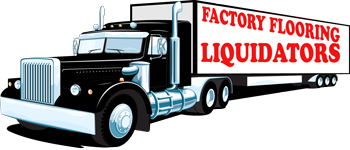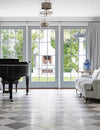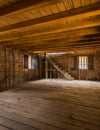
Accidents in your home are bound to happen. Maybe you spill a glass of orange juice, your puppy relieves herself on the floor or your toilet overflows — whatever it is, chances are you have to clean puddles of liquid off the floor from time to time.
But if you’re looking at putting in new flooring, it’s important to be aware that your floor’s ability to handle those spills isn’t automatic. If your flooring is not constructed from the right materials, water can seep right through it.
This is where waterproof flooring comes in. Particularly in areas of the house where spills are common, like the kitchen and bathroom, you may want to make sure you have waterproof floors.
What Is Waterproof Flooring?
Waterproof flooring is just what it sounds like — flooring that can’t be penetrated by water or any other liquid. If you pour water onto a regular, unaltered wooden floorboard, it won’t take long for the water to seep through, soaking the board and dripping out the bottom. Waterproof flooring avoids this issue with the aid of special materials and coverings.
It’s worth noting that waterproof flooring isn’t merely regular flooring with a special coating on top as an afterthought. Waterproof flooring is specially designed to keep liquid out, meaning the waterproof quality is integral to the flooring itself. The result is that when you spill liquid onto it, the liquid will simply sit on top indefinitely without penetrating it, so you can mop it all up without a problem.
This is more than just a convenience — it’s important enough that in some places there are even laws dictating which kinds of floors are acceptable to use in food establishments, where spills are common. While there may not be any regulations about what kind of flooring to use in your home, it’s still important to make sure you choose material capable of protecting against damage.
Benefits of Waterproof Flooring
It’s easy enough to say that waterproof flooring is a positive, but if you don’t understand the problems associated with water penetrating your floor, you may be questioning why that’s the case. What makes waterproof flooring so worth the investment?
Waterproof flooring offers a few key benefits. Here are some of the main advantages of waterproof floors.
Prevents Damage
One of the foremost problems to come of water seeping through your floor is the damage it does to the subfloor. Unlike the floor itself, the subfloor is never waterproof, leaving it vulnerable to water damage. As water reaches it over time from various spills, it can start to rot and collapse. And it’s one thing to replace a few floorboards, but trying to replace an entire subfloor system is a world of trouble.
Waterproof flooring prevents this issue by keeping water from ever touching the subfloor. When liquid can’t even make it past the surface of the floor, there’s no chance of it damaging anything underneath.

Stops Moisture Buildup
When water penetrates your floor, it can do more than cause damage to the house itself. It can also prove harmful to you. As moisture builds up in different areas, it can start to grow mold and mildew. It can also produce nasty odors, which makes an unpleasant environment. It also makes for a dangerous one, as inhaling mildew can lead to a range of health issues.
This is another benefit of waterproof flooring. It keeps the water from penetrating the floor to start with, and it also keeps any mold and mildew that still appears from entering the air as easily. It serves as a barricade in both directions, keeping spills trapped above the floor and mildew trapped beneath it.
Provides Easy Cleaning
As a final bonus, waterproof floors are incredibly easy to clean. Since other floors absorb moisture more easily, it can be more difficult to clean them effectively — sometimes half of the spill you want to clean up soaks into the flooring itself. Waterproof flooring prevents this, however. The result is that any liquids you want to clean off your floor can be easily wiped away, automatically repelled by the floor itself.
Important Terms Related to Waterproof Flooring
To better understand how waterproof flooring works, you may want to learn how it is constructed. Several terms are associated with waterproof flooring construction, each of which provides some additional insight into how the flooring keeps out water. Here are a few of the main waterproof flooring terms to know:
-
Pad: Many waterproof flooring installations come with a pad, often made of cork or foam, attached to the bottom of the core. This creates a surface with increased sound deadening and softer walking.
-
ABA construction: Just as the term “ABA” places an A on either side of the letter B, some waterproof floors have a layer of vinyl on either side of the core to make it firmer and more stable.
-
Wear layer: The wear layer is the very top layer of a waterproof floor, so named because it’s designed to take the wear and tear of being cleaned and walked on.
-
Direct print: Direct print refers to floors where the surface pattern is printed directly onto the core, rather than having a print film laid over the surface.
-
EIR: EIR stands for embossed in register, which means the wear layer has a texture printed onto it that bears the appearance of another material, such as wood or stone.
Types of Waterproof Flooring

While all waterproof floors achieve the same basic function, they’re not all made the same way. A few different types of waterproof floors are available, each of which comes with its own distinct advantages. Three main types of flooring are used — WPC, SPC and LVT.
-
WPC: WPC stands for wood polymer composite. It’s primarily composed of a vinyl made from a mixture of wood and plastic, which is where it gets its name. Perhaps the most significant benefit of WPC is that it is especially comfortable to walk on. This is due in part to the fact that it’s thickened with air, which causes it to give a little underfoot. Unfortunately, this arrangement also means it swells and shrinks significantly with temperature, so it isn’t as dimensionally stable as other floor types.
-
SPC: SPC stands for stone polymer composite. It’s similar to WPC except it mixes plastic with stone rather than with wood. Because it includes stone, this flooring type is significantly sturdier than WPC. The added sturdiness prevents it from changing with temperature, so it’s more dimensionally stable across the different seasons, but it’s less comfortable to walk on.
-
LVT: LVT stands for luxury vinyl tile. This waterproof tile flooring tends to be thinner and more flexible than WPC or SPC, which makes it incredibly easy to install. The downside is that it’s even less dimensionally stable than WPC. It can change size significantly across different temperatures. Since it doesn’t retain its shape well, it can also show imperfections in the subfloor beneath it.

Need Help Installing Floors in Your Home? Ask the Experts at Factory Flooring
What type of underlayment should you use? How many inches thick? How do you install it? And how do you avoid damaging your floors in the process?
When you work with Factory Flooring, you don’t have to worry about these questions. Our team of professional flooring installers will handle all the heavy lifting for you — literally. All you have to do is relax and enjoy the savings on your energy bill.
Need to get more flooring ideas first? Our design blog has dozens of articles to help you get started. Whenever you’re ready to tackle your insulation project, we’ll be here to help. Contact us online to get started, or call Factory Flooring at 469-583-7053 .






